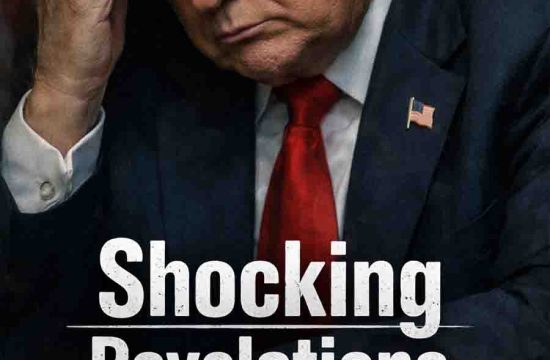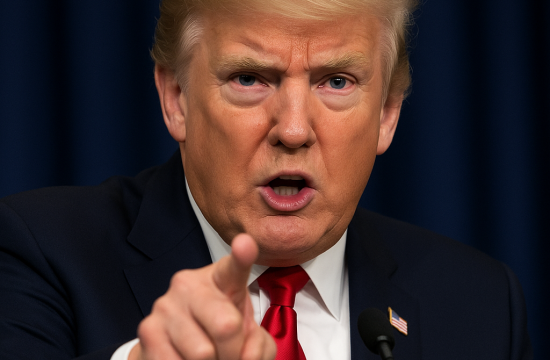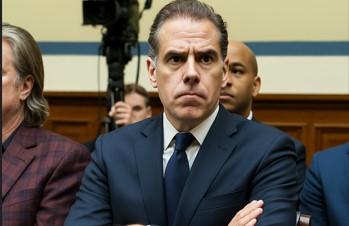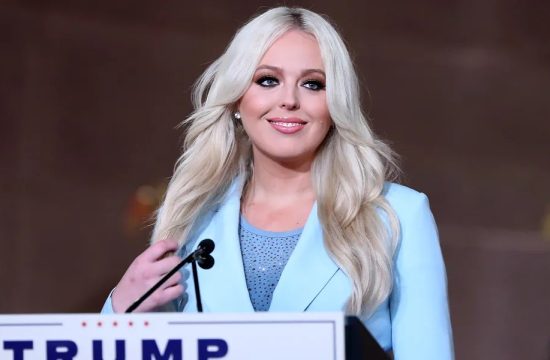US President Donald Trump has acknowledged that the tariffs imposed on Mexico, Canada, and China may bring “some pain” to Americans. His statement comes as Wall Street and key US trading partners express cautious optimism that the trade dispute will not be prolonged.
On Sunday, Trump defended his decision to implement the tariffs, which he announced the previous day. In response, both Canada and Mexico immediately pledged to introduce retaliatory measures following the president’s executive order on Saturday.
Trump Enforces Tariffs on Key Trade Partners
A photo captures Trump appearing stern, holding a folder with signed documents.
Staying true to his trade policies, Trump has enacted significant tariffs on Mexico, Canada, and China. The affected nations have signaled their intent to collaborate in response to the 25% US import duties, a move that could disrupt the long-standing integrated trade networks among North American countries.
China has vowed to contest the US-imposed 10% tariffs at the World Trade Organization and has promised countermeasures, though the specifics remain undisclosed.
Critics argue that targeting the US’s three largest trade partners will ultimately burden American consumers by driving up prices and potentially stalling global economic growth.
“The United States has massive trade deficits with Canada, Mexico, and China, as well as many other countries! We owe $36 trillion, and we’re done being the ‘Stupid Country’!” Trump stated on social media.
Writing in capital letters, he proclaimed, “This will be the golden age of America! Will there be some pain? Yes, maybe (and maybe not!).”
However, he did not clarify what “some pain” would entail.
Economic Impact and Stagflation Concerns
Economic models analyzing Trump’s tariff policies, such as one from EY Chief Economist Greg Daco, indicate a potential 1.5 percentage point reduction in US GDP growth for the year. The analysis also predicts that the tariffs could push Canada and Mexico into a recession while fostering “stagflation” in the US—characterized by high inflation, slow economic growth, and elevated unemployment.
Financial markets are closely monitoring the situation, with some analysts suggesting that negotiations, particularly with Canada and China, remain a possibility.
“With just two days until implementation, the tariffs appear set to take effect. However, a last-minute agreement cannot be ruled out entirely,” economists at Goldman Sachs stated in a report released on Sunday.
They also noted that while the White House has set general conditions for lifting the tariffs, their duration remains uncertain.
Under three executive orders, the new tariffs are scheduled to take effect at 12:01 AM on Tuesday. Trump has pledged to maintain them until the US resolves what he describes as a national emergency related to fentanyl and illegal immigration.
Trump’s Foreign Policy and Efforts to Counter China
An image depicts a worker communicating via walkie-talkie in the foreground, with a large cargo ship in the background.
US Secretary of State Marco Rubio, during his inaugural visit to Panama and other Latin American nations, is working to counter China’s expanding influence in the region.
China has remained open to dialogue with the US but has strongly rebuffed accusations regarding fentanyl trafficking.
“Fentanyl is America’s problem,” China’s foreign ministry asserted, emphasizing that the nation has implemented extensive measures to combat the crisis.
Canada’s ambassador to the United States, Kirsten Hillman, expressed hope for a resolution.
“We remain optimistic that these tariffs will not take effect on Tuesday,” Hillman remarked.
Trump has shown little inclination toward compromise with Canada, at times making inflammatory remarks, including suggestions that Canada should become the 51st US state and that it would struggle to remain viable without substantial US economic support.
National Emergency Laws and Legal Challenges
By invoking the International Emergency Economic Powers Act and the National Emergencies Act, Trump has justified the tariffs as a response to crises, granting himself broad authority to enforce trade restrictions.
Legal experts suggest that Trump’s aggressive use of executive power may be pushing the boundaries of US law, potentially exposing the tariffs to legal scrutiny.
With the implementation date looming, global markets, businesses, and governments remain on edge, anticipating the impact of Trump’s trade strategy.











